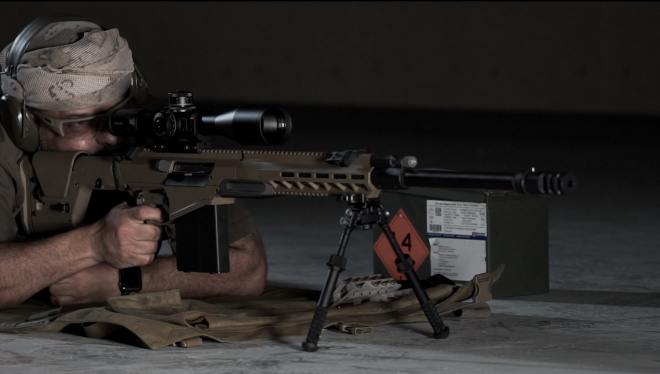Caracal is a 15 years old firearms manufacturing company based in the capital of the United Arab Emirates, Abu Dhabi. While the name is now known worldwide, the company still faces some misconceptions about its true capabilities. TFB got the chance to enjoy a tour of the facilities of Caracal, and we believe our readers will appreciate it as well.
Caracal @ TFB:
- Caracal Doubles Down for India’s Renewed Search for 5.56x45mm Carbines
- [ADIHEX 2021] Caracal from the United Arab Emirates – Golden Jubilee
- [IDEX 2021] Caracal from the United Arab Emirates
- Caracal Commits to Producing Indian Army Carbines In India
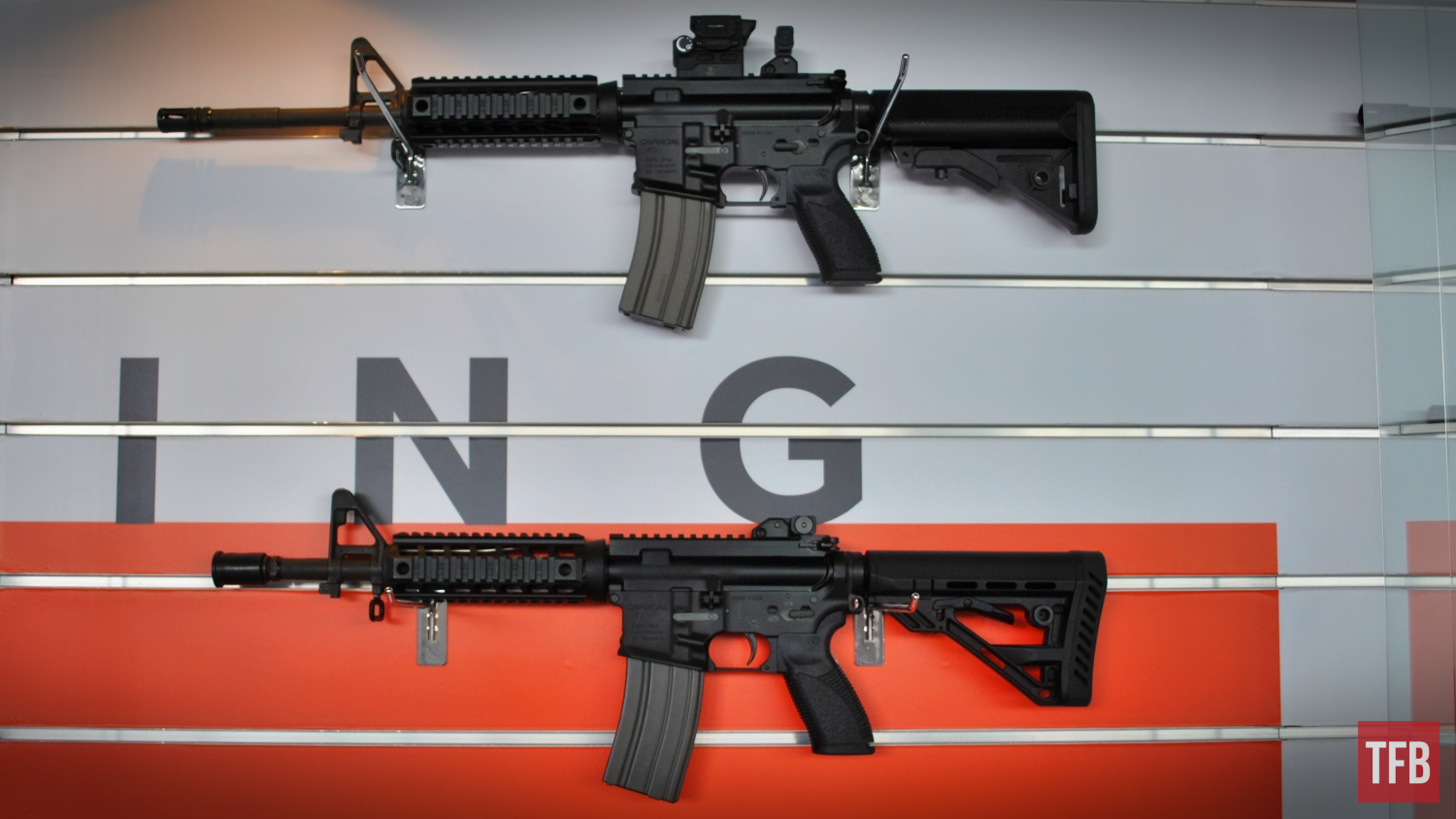
TFB Factory Visit: An Exclusive Tour Through Caracal in Abu Dhabi – CAR814, the DI model out of the AR15 line from the manufacturer
Company Intro
Founded in 2007 with the goal of becoming the national firearms manufacturer of the UAE, over the years Caracal tested the market with several new designs of pistols and carbines. Some of these are only known to the general public thanks to brief appearances at either IDEX or ADIHEX, while others gained their own market share, globally.
Since its birth, Caracal managed to secure talents from all over the world and also acquired established, European manufacturers. Over a few years, we saw the company as part of several UAE government groups, first Tawazun Holding, then EDIC, and lastly EDGE. The latter oversaw more investment in manufacturing equipment, the implementation of a new, aggressive strategy for the global military markets, and heightened levels of synergy with the other business units of the Group.
The Tour
After a warm and enthusiastic welcome in the rather unassuming facility, I was guided through the very active Prototyping Department. The area appears relatively small mostly because its space is extremely well equipped and constantly busy, with multiple CNC machining centers, EDM machines, industrial 3D printers (fiber-reinforced nylon and stereolithography), manual tools, and machines for spring manufacturing. The company is very active in R&D and this results in many components being prototyped, with every new design or significant modification being run through the testing department before being allowed to progress further. This was highlighted as one of the steps taken years ago toward the highest QA standards and ISO certifications.
Along the same line of thinking, the next stop by the warehouse featured a look into the Materials Laboratory, where specimens from each batch of raw materials are tested to ensure conformity with the requirements.
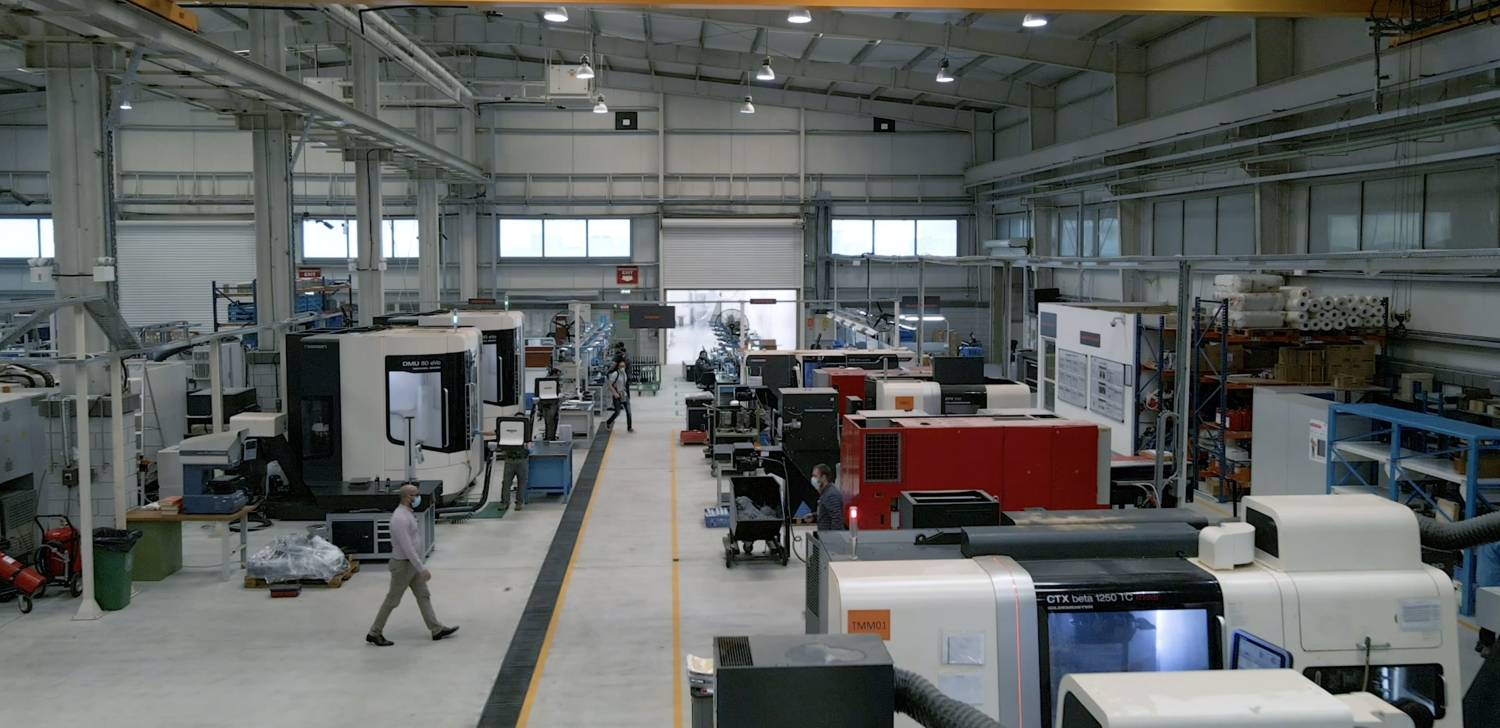
TFB Factory Visit: An Exclusive Tour Through Caracal in Abu Dhabi – Overview of the main factory floor (Photo courtesy of Caracal)
Next, the visit took me to the Manufacturing and Assembly shop floor, a well-organized area with several machining centers, and specialized equipment, including polymer injection molding, as everything is done in-house. The most interesting area here is likely the lane dedicated to sniper rifles barrel manufacturing, starting from bar stock that goes through deep bore drilling, external contouring, heat treatment, and button rifling, followed by 100% borescope testing.
The manufacturing floor appears to be divided into cells, each dedicated to a specific type of firearm, taking it from raw material to assembled unit.
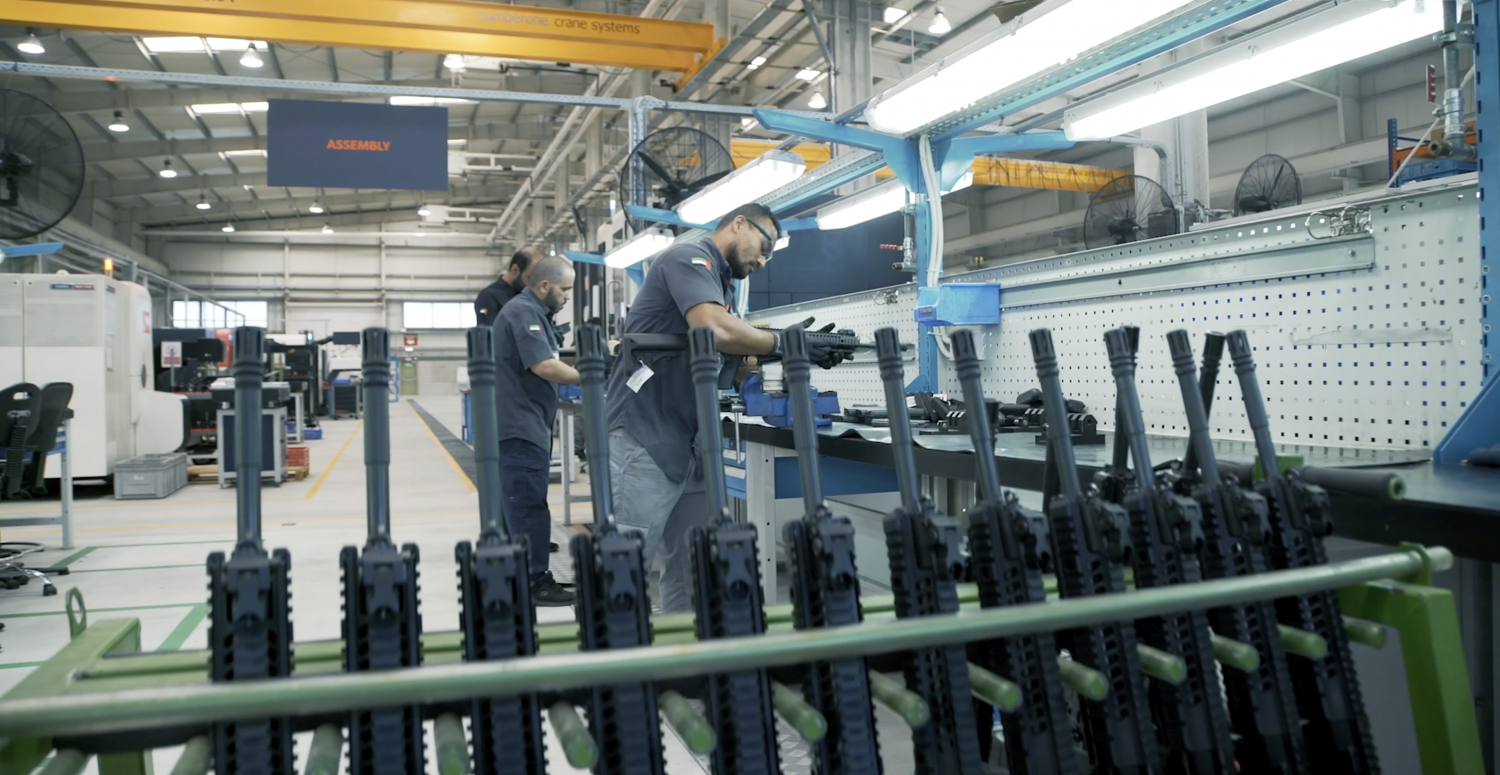
TFB Factory Visit: An Exclusive Tour Through Caracal in Abu Dhabi – Assembly and QC (Photo courtesy of Caracal)
Just like all assembled firearms, we then moved to the Testing area. In Caracal, 100% of products are tested according to NATO standards, which, for certain models, means environmental testing (with a dedicated chamber simulating extremely hot or cold environments) and barrel obtrusion. These tests are run in a dedicated 25m indoor range.
After the internal cycles, all firearms are then proof tested by the UAE national proof house, a third party located next to Caracal but wholly independent. The UAE adheres to the CIP protocol, which requires that each firearm must safely handle charges developing 20% more pressure than the nominal maximum limit.
The Fun
In the recently renovated and further insulated 100m indoor test range, the team of Caracal prepared a selection of models from 9mm to .338 for me to test.
CMP9
We started with the CMP9 with folding stock, emptying two magazines of 9mm Luger NATO loads in select-fire. This SMG competes in international tenders and performs greatly, with impressive results in endurance testing. I was shown a sample with over 30,000 rounds: it still looked like new with the only signs of intensive use being the discolored controls. The charging handle is normally AR-15 style, but some LEO users required a side charger, which was implemented over the barrel, in the handguard, with minimal modification.
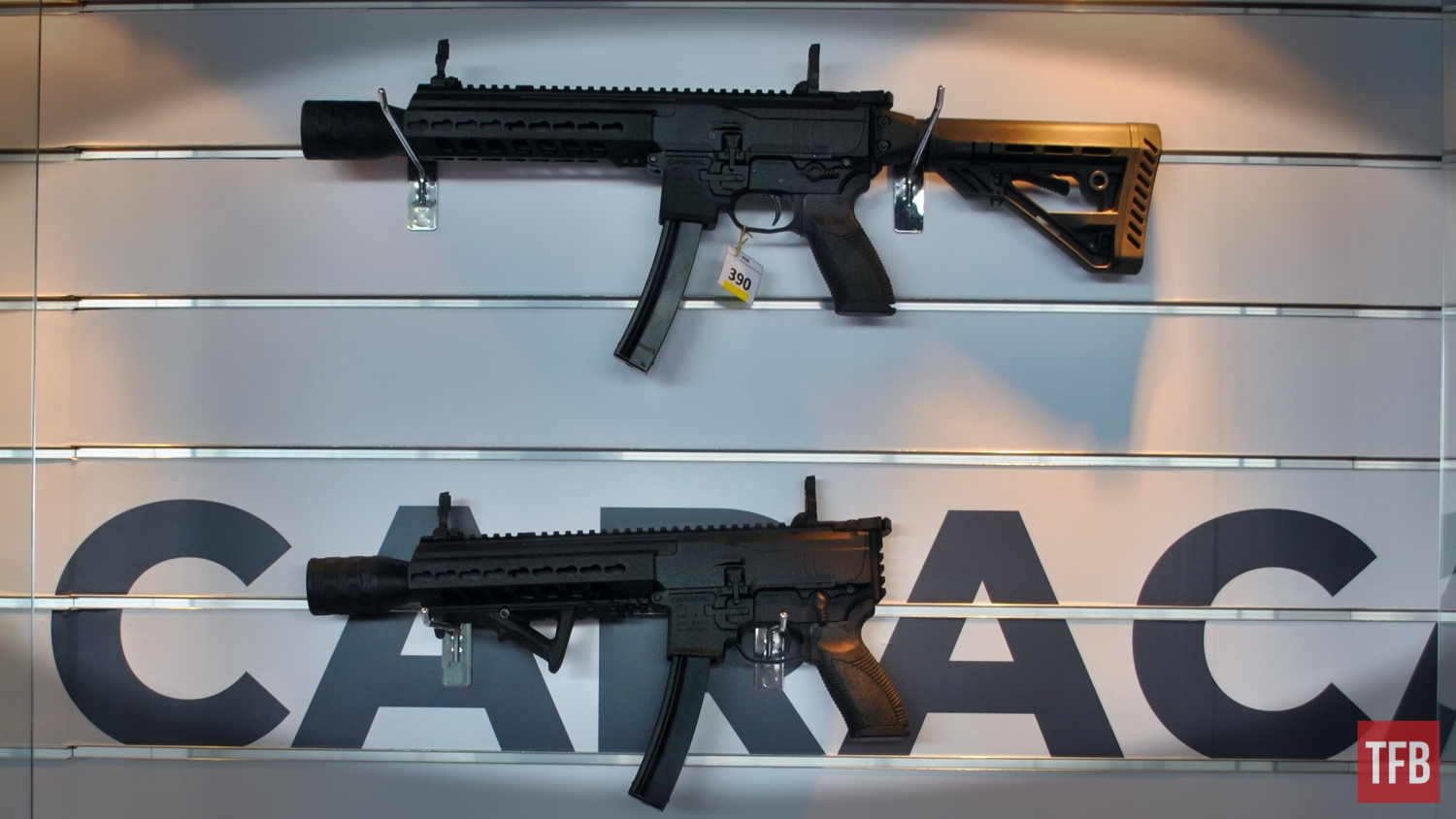
TFB Factory Visit: An Exclusive Tour Through Caracal in Abu Dhabi – CMP9 SD models
Operation is via straight blowback and the rearward travel of the telescoped bolt is buffered by a rubber insert in the back of the receiver. The firearm is offered as suppressor-ready or integrally suppressed, it employs mags with no last-round bolt hold open.
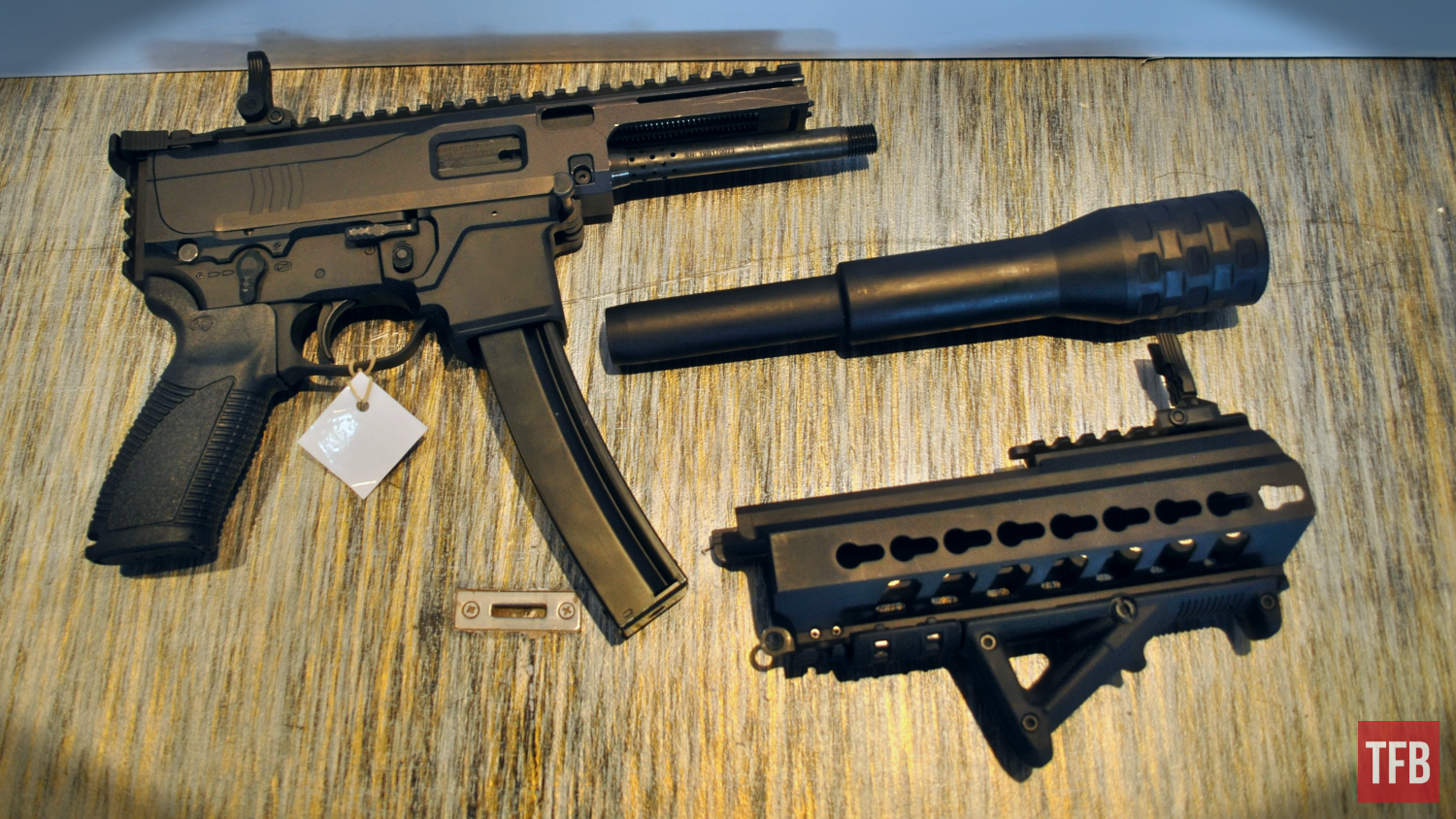
TFB Factory Visit: An Exclusive Tour Through Caracal in Abu Dhabi – CMP9 SD, detail of the integrally suppressed design; the suppressor looks like a blast deflector when fully assembled
It is my opinion that a competitively priced civilian version would be really successful on the American market. However, this is not yet possible as Caracal currently has no available R&D hours focused on redesigning the trigger group to semi-auto only as per ATF requirements. One can hope this will happen soon.
CAR816
A 5.56, piston-operated AR, it was available as a select-fire model with a barrel about 10″ long.
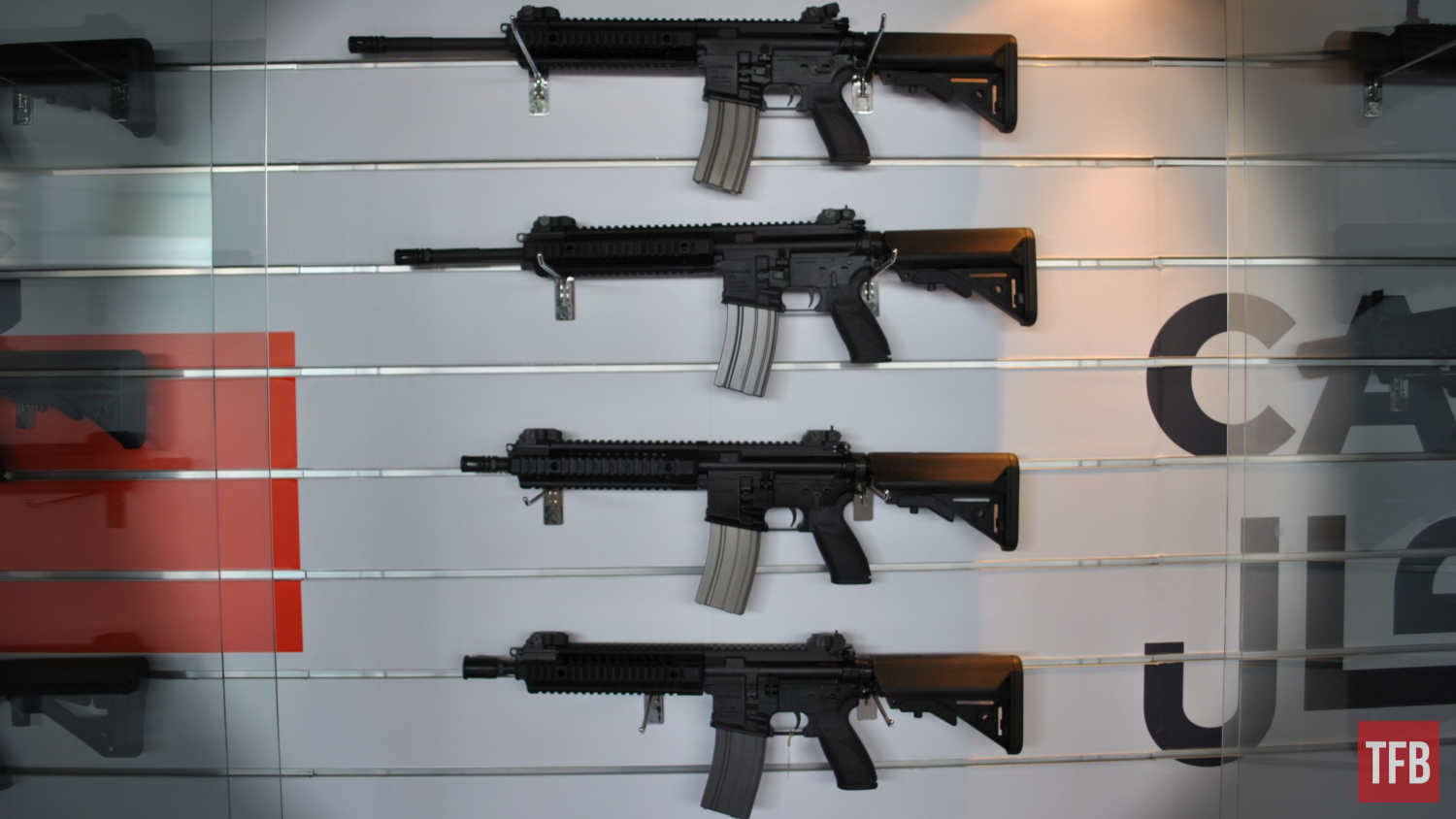
TFB Factory Visit: An Exclusive Tour Through Caracal in Abu Dhabi – CAR816 in various configurations
On the surface there may be nothing unique about this firearm, however, seeing a 7.5″ sample endurance tested above 50,000 rounds, with internal components looking as good as new, gave me great confidence in the durability of the firearm.
CAR817
The CAR817 is a 7.62×51 piston-operated AR-10-style battle rifle. I was given the chance to test a 12.5″ barrel, a compact select-fire model, requested by an international tender. While I was shown that the lightweight rifle can indeed be shot in a burst by a well-trained shooter, I was invited to shoot in semi.
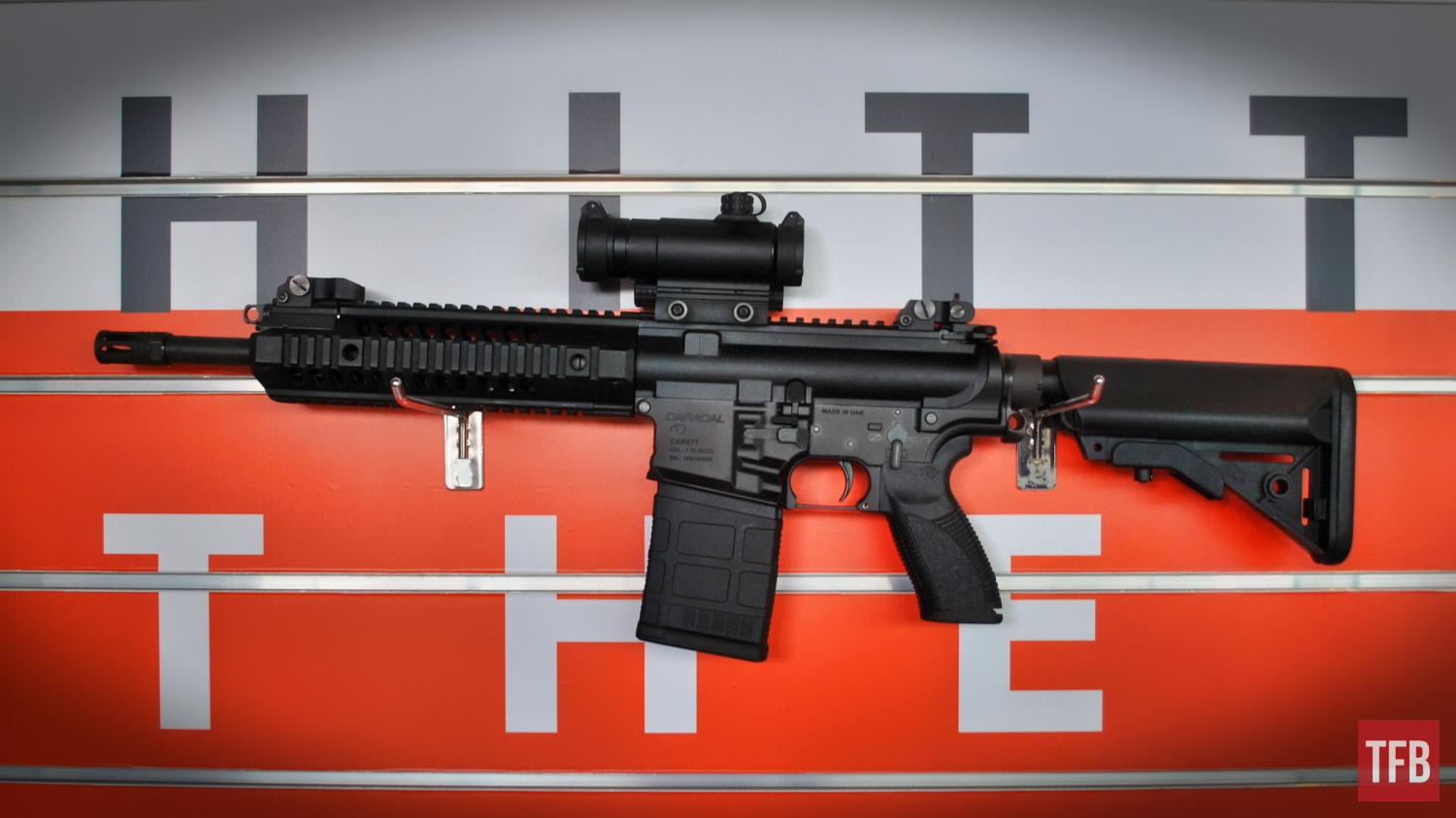
TFB Factory Visit: An Exclusive Tour Through Caracal in Abu Dhabi – Short-barreled CAR817
The CAR817 is also available in a semi-auto DMR configuration. I had the opportunity to shoot it unsuppressed and suppressed with Caracal’s own QD silencer. While I’m far from a marksman, I was able to be around 1 MOA in the two groups shot at 100m, thanks to the very stable platform and the superb Geissele trigger the rifle comes equipped with.
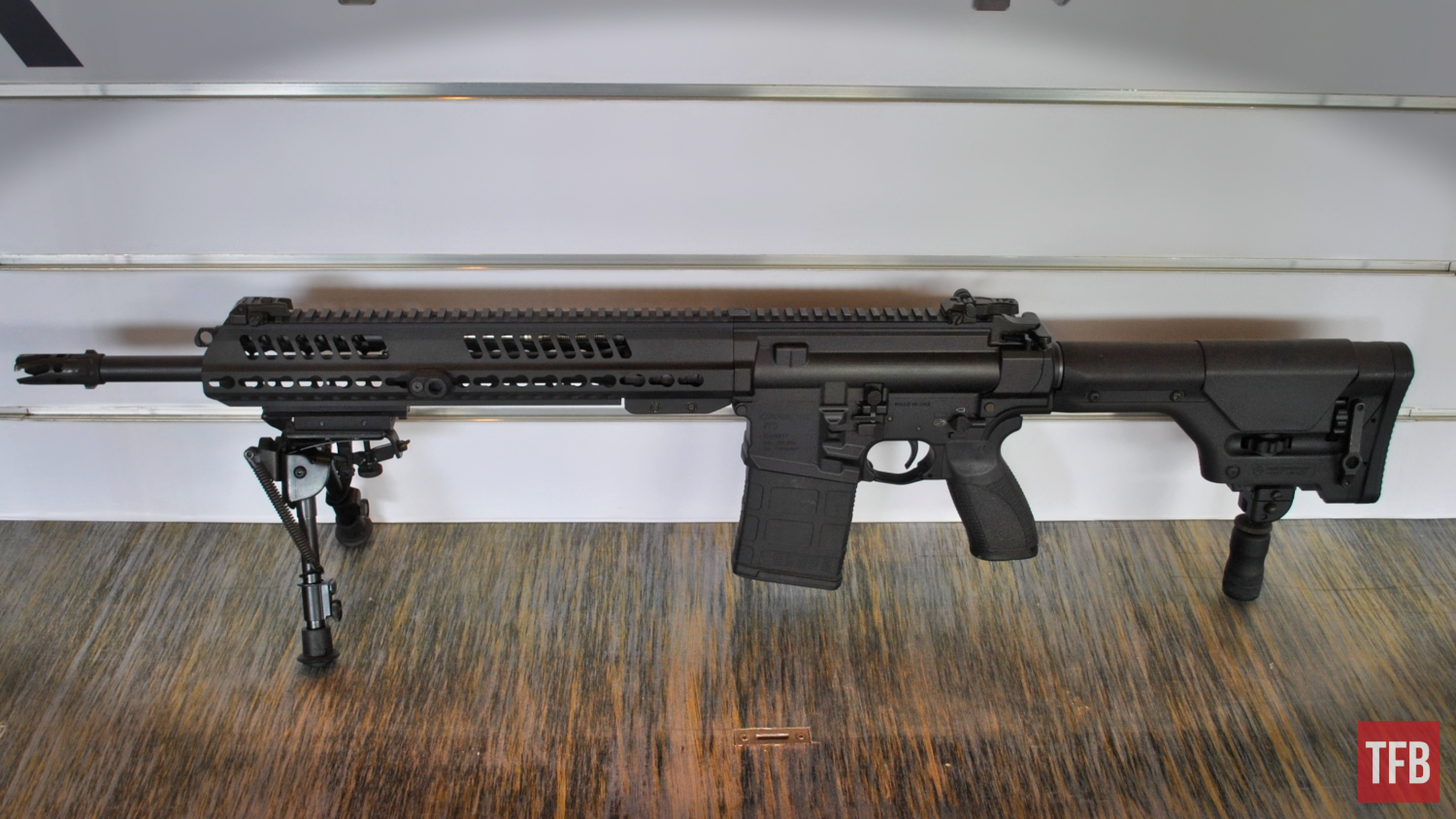
TFB Factory Visit: An Exclusive Tour Through Caracal in Abu Dhabi – CAR817 DMR
CSR338
The CSR338 is a .338 Lapua Magnum bolt action precision rifle, with a QD suppressor (a user requirement) capable of keeping the blast in the 135dB range. The action feels smooth, but stripping the long rounds from the magazine and chambering them requires moderate yet constant pressure. Caracal .338 barrels are rifled to handle both 250 and 300 grs bullets.
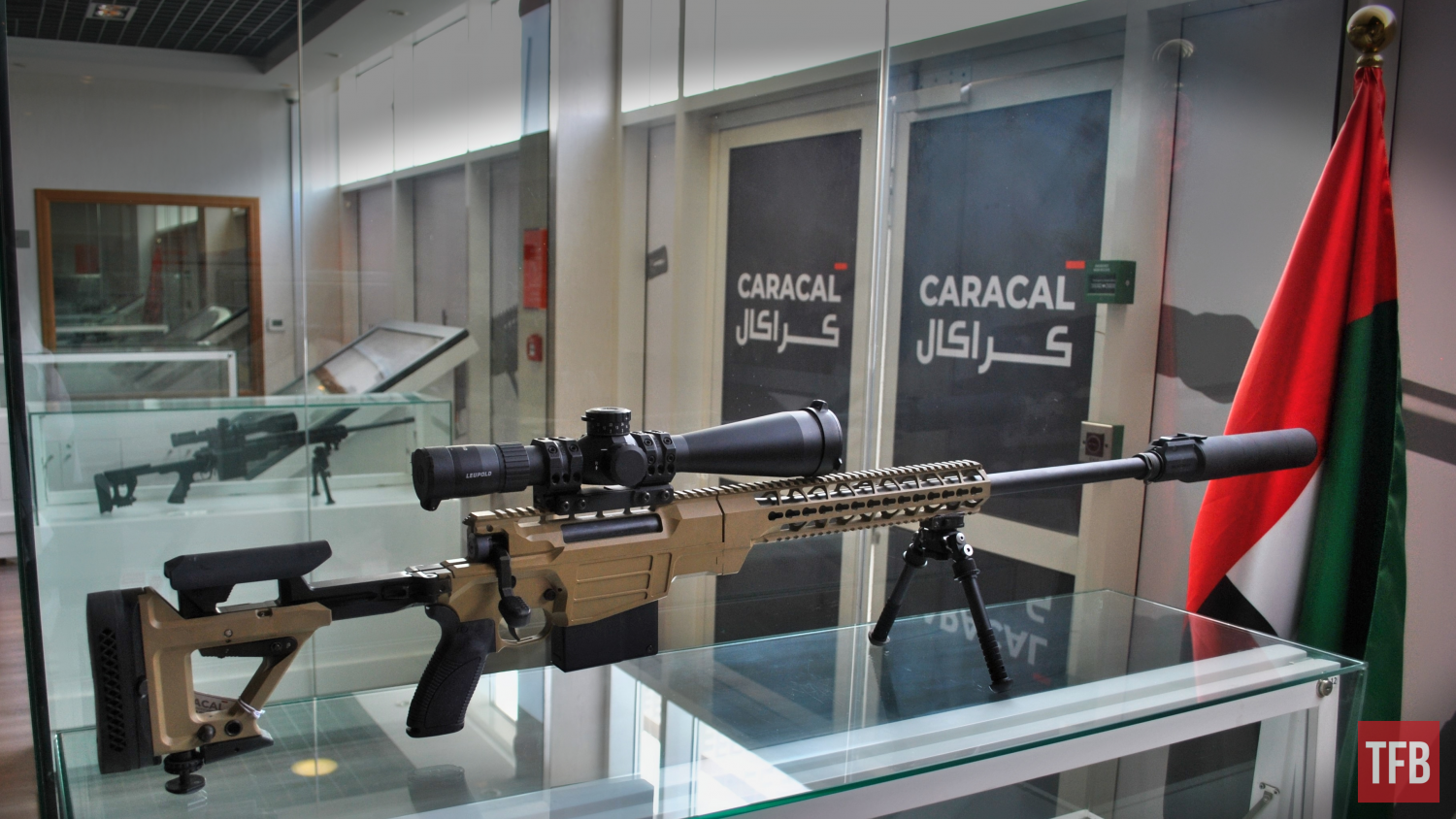
TFB Factory Visit: An Exclusive Tour Through Caracal in Abu Dhabi – CSR338 bolt action sniper rifle, note the fully adjustable buttstock
This firearm is said to be the lightest in its category, however, it was still pleasant to shoot. The fully adjustable stock (patented and shared by the whole CSR line) is designed to be fully operated with one hand, with all the adjustments moving under spring tension to speed up the setting.
TFB EXCLUSIVE – CSA338 test fire
The icing on the cake of the visit, an unplanned and highly appreciated gift out of the generosity of the R&D Department Head, was the chance to shoot one prototype of the CSA338 that we first saw at IDEX 2021.
The gun was born out of a user requirement from military snipers, increasingly more reliant on semiautomatic rifles. The designing process saw extensive benchmarking with the few options available on the market, which gave the designing team clear indications about what features were needed in the final model.
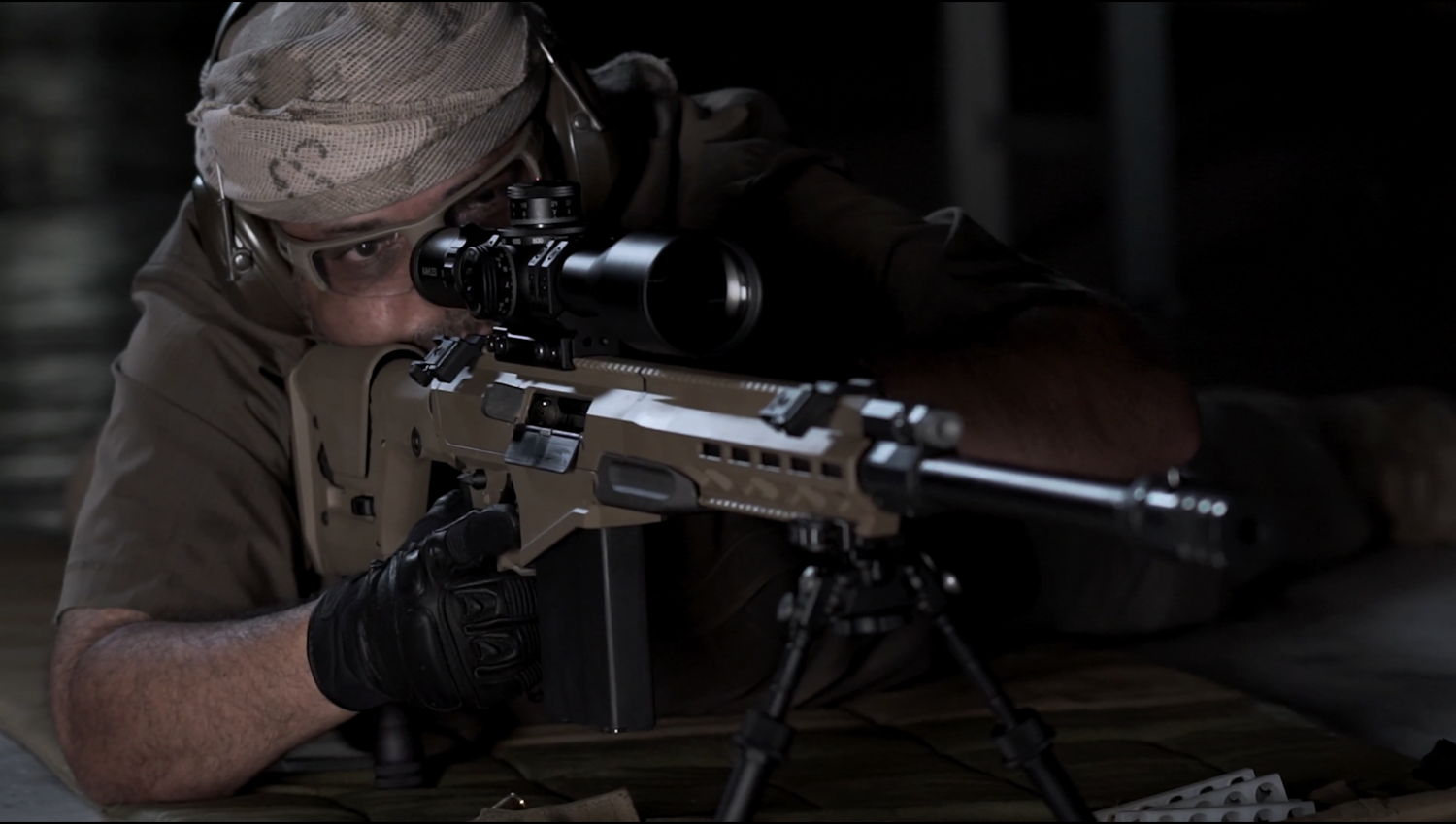
TFB Factory Visit: An Exclusive Tour Through Caracal in Abu Dhabi – UAE Sniper testing the CSA338 (Photo courtesy of Caracal)
The prototype brought to the test range was quickly assembled for this unexpected testing, yet, besides the optic not zeroed, it was fully capable. I saw 90% reliability with one FTE (solved in a couple of seconds) due to the partially 3D printed magazine (the final model will hold 15 rounds).
The 5 shots fired by me had no issues at all, the action was forceful but smooth, with no sign of being overgassed. The felt recoil was at 7.62 NATO level. The controls were easily accessible, with a particular note for the bolt release right above the trigger finger. A spent brass, under a quick inspection, showed no signs of deformation and only a slightly polished spot on the base, most likely due to the ejector (there are two) closest to the extractor. Damaged brass can be expected with such a high-pressure semiautomatic rifle, and finding the contrary is a sign of a very well-tuned system.
The operation is via a short-stroke piston, with a long 3 pieces piston, venting excess gas by the gas block and transferring the momentum through the slim handguard (actually slimmer than the one on the CSR308). The 3 sections of the piston compensate for any potential defection, increasing the overall reliability.
The BCG diameter is equal to CAR817/AR10, with which the CSA338 shares the same buffer. The AR-style bolt head has dual ejectors and features a delayed opening cam running on a roller bearing. The receiver is fully sealed to the external environment with no screws, and the disassembly is accomplished with a single round as a tool.
The rifle felt ready for release, but the R&D wants to run further testing and refinement to minimize perceived recoil and reduce the split time between shots. Definitely, a truly innovative piece that could conquer its niche market and that proves the designing capabilities of Caracal.
Conclusions
Overall, the visit confirmed the feeling that Caracal is now a serious player in the global market, with both design and manufacturing capabilities that are usually only associated with OEMs with a much longer heritage.
While the focus seems to be mostly on the military market, Caracal US operations are currently cranking out CAR816s, while the Gen2 of the F pistol is expected to be released early next year. Other models of the current product line could definitely meet the tastes of American shooters, but so far they are not planned for the civilian market.
 Your Privacy Choices
Your Privacy Choices
